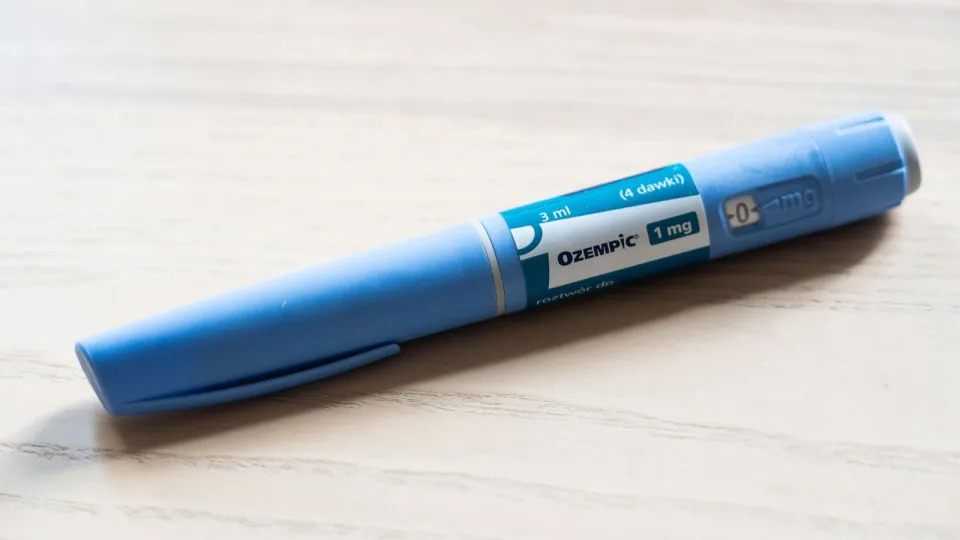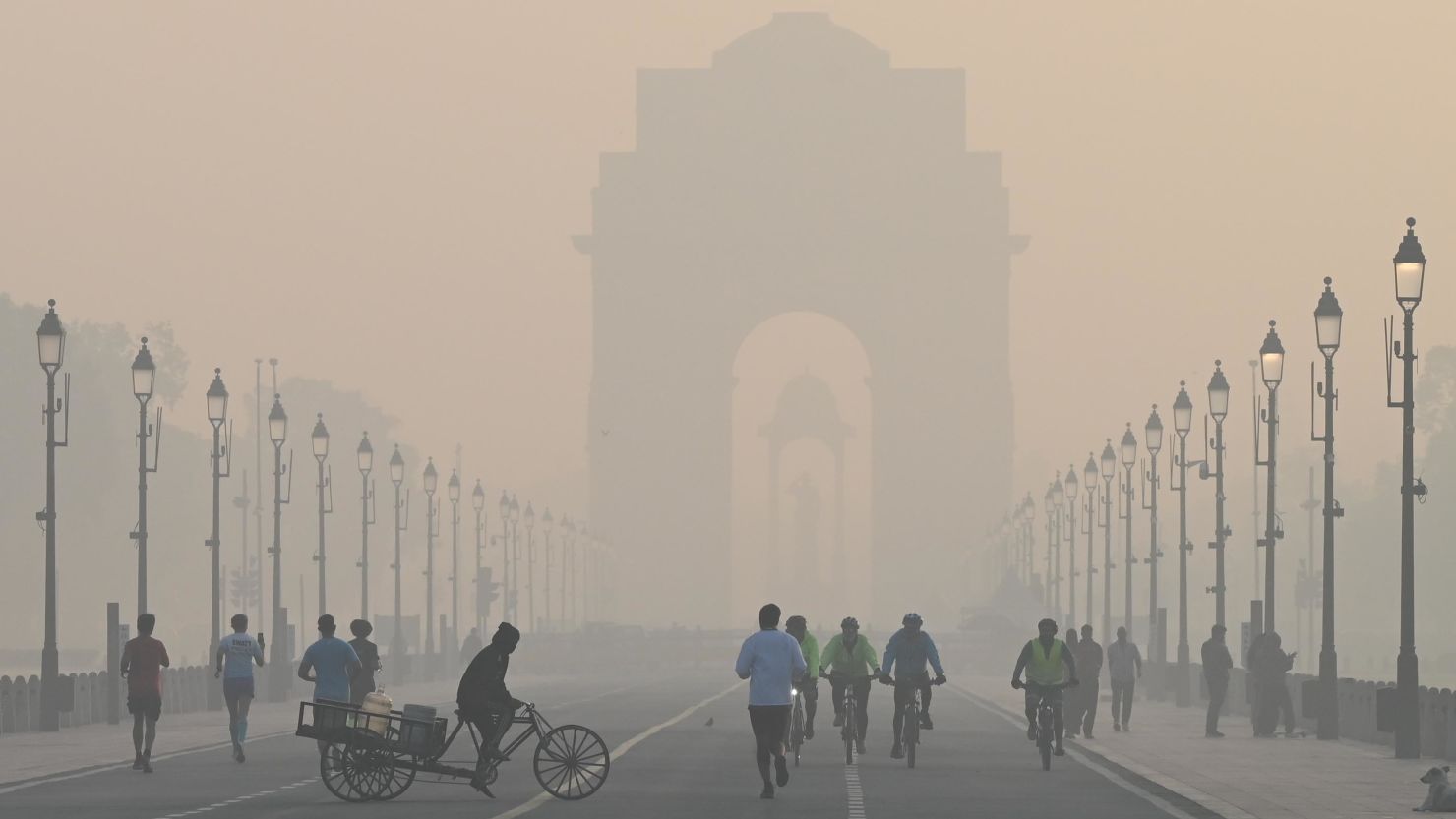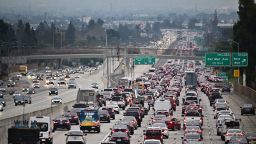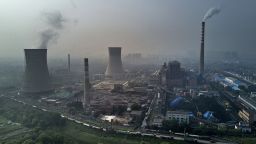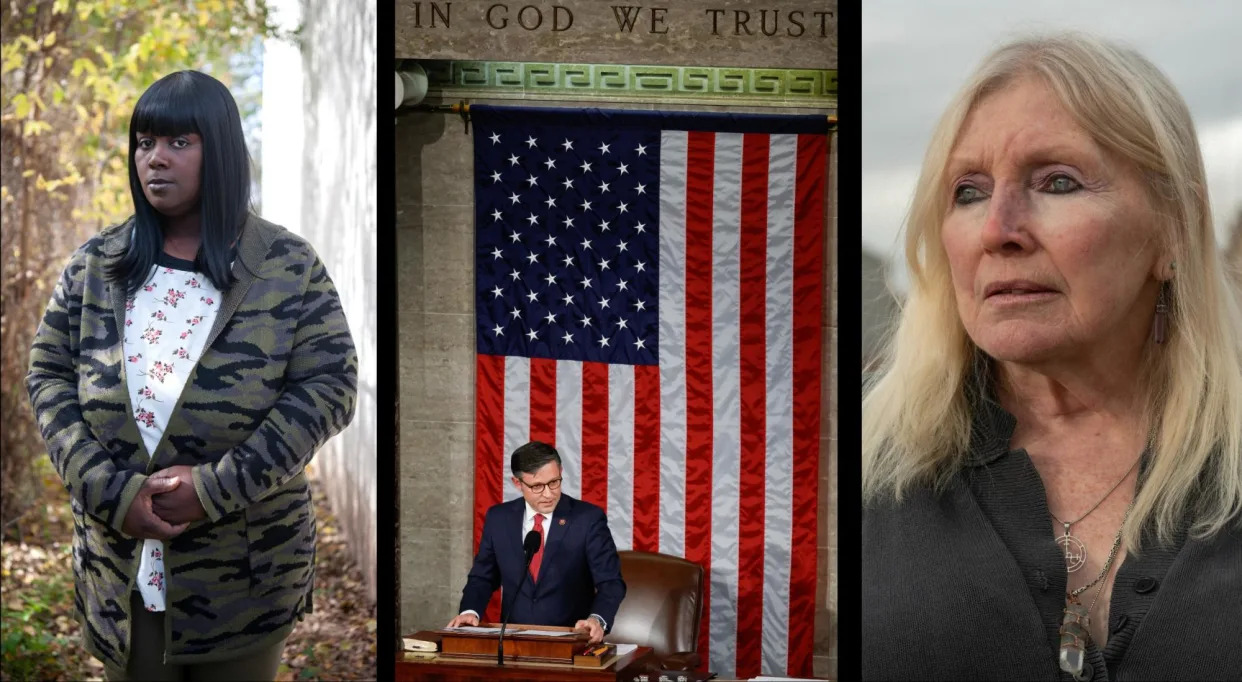The Washington Post
Amid explosive demand, America is running out of power
Evan Halper – April 6, 2024


Correction: A previous version of this article incorrectly said the revised forecast for power needs in Georgia showed power use in the state increasing 17 times. New demand, not total demand, is projected to increase 17 times. The article also misspelled the name of the agency that advocates for Maryland ratepayers. It is the Maryland Office of People’s Counsel. The article has been corrected.
Vast swaths of the United States are at risk of running short of power as electricity-hungry data centers and clean-technology factories proliferate around the country, leaving utilities and regulators grasping for credible plans to expand the nation’s creaking power grid.
In Georgia, demand for industrial power is surging to record highs, with the projection of new electricity use for the next decade now 17 times what it was only recently. Arizona Public Service, the largest utility in that state, is also struggling to keep up, projecting it will be out of transmission capacity before the end of the decade absent major upgrades.
Northern Virginia needs the equivalent of several large nuclear power plants to serve all the new data centers planned and under construction. Texas, where electricity shortages are already routine on hot summer days, faces the same dilemma.
The soaring demand is touching off a scramble to try to squeeze more juice out of an aging power grid while pushing commercial customers to go to extraordinary lengths to lock down energy sources, such as building their own power plants.
“When you look at the numbers, it is staggering,” said Jason Shaw, chairman of the Georgia Public Service Commission, which regulates electricity. “It makes you scratch your head and wonder how we ended up in this situation. How were the projections that far off? This has created a challenge like we have never seen before.”
A major factor behind the skyrocketing demand is the rapid innovation in artificial intelligence, which is driving the construction of large warehouses of computing infrastructure that require exponentially more power than traditional data centers. AI is also part of a huge scale-up of cloud computing. Tech firms like Amazon, Apple, Google, Meta and Microsoft are scouring the nation for sites for new data centers, and many lesser-known firms are also on the hunt.
The proliferation of crypto-mining, in which currencies like bitcoin are transacted and minted, is also driving data center growth. It is all putting new pressures on an overtaxed grid – the network of transmission lines and power stations that move electricity around the country. Bottlenecks are mounting, leaving both new generators of energy, particularly clean energy, and large consumers facing growing wait times for hookups.
The situation is sparking battles across the nation over who will pay for new power supplies, with regulators worrying that residential ratepayers could be stuck with the bill for costly upgrades. It also threatens to stifle the transition to cleaner energy, as utility executives lobby to delay the retirement of fossil fuel plants and bring more online. The power crunch imperils their ability to supply the energy that will be needed to charge the millions of electric cars and household appliances required to meet state and federal climate goals.
The nation’s 2,700 data centers sapped more than 4 percent of the country’s total electricity in 2022, according to the International Energy Agency. Its projections show that by 2026, they will consume 6 percent. Industry forecasts show the centers eating up a larger share of U.S. electricity in the years that follow, as demand from residential and smaller commercial facilities stays relatively flat thanks to steadily increasing efficiencies in appliances and heating and cooling systems.
Data center operators are clamoring to hook up to regional electricity grids at the same time the Biden administration’s industrial policy is luring companies to build factories in the United States at a pace not seen in decades. That includes manufacturers of “clean tech,” such as solar panels and electric car batteries, which are being enticed by lucrative federal incentives. Companies announced plans to build or expand more than 155 factories in this country during the first half of the Biden administration, according to the Electric Power Research Institute, a research and development organization. Not since the early 1990s has factory-building accounted for such a large share of U.S. construction spending, according to the group.
Utility projections for the amount of power they will need over the next five years have nearly doubled and are expected to grow, according to a review of regulatory filings by the research firm Grid Strategies.
Chasing power
In the past, companies tried to site their data centers in areas with major internet infrastructure, a large pool of tech talent, and attractive government incentives. But these locations are getting tapped out.
Communities that had little connection to the computing industry now find themselves in the middle of a land rush, with data center developers flooding their markets with requests for grid hookups. Officials in Columbus, Ohio; Altoona, Iowa; and Fort Wayne, Ind. are being aggressively courted by data center developers. But power supply in some of these second-choice markets is already running low, pushing developers ever farther out, in some cases into cornfields, according to JLL, a commercial real estate firm that serves the tech industry.
Grid Strategies warns in its report that “there are real risks some regions may miss out on economic development opportunities because the grid can’t keep up.”
“Across the board, we are seeing power companies say, ‘We don’t know if we can handle this; we have to audit our system; we’ve never dealt with this kind of influx before,’” said Andy Cvengros, managing director of data center markets at JLL. “Everyone is now chasing power. They are willing to look everywhere for it.”
“We saw a quadrupling of land values in some parts of Columbus, and a tripling in areas of Chicago,” he said. “It’s not about the land. It is about access to power.” Some developers, he said, have had to sell the property they bought at inflated prices at a loss, after utilities became overwhelmed by the rush for grid hookups.
Rethinking incentives
It is all happening at the same time the energy transition is steering large numbers of Americans to rely on the power grid to fuel vehicles, heat pumps, induction stoves and all manner of other household appliances that previously ran on fossil fuels. A huge amount of clean energy is also needed to create the green hydrogen championed by the White House, as developers rush to build plants that can produce the powerful zero-emissions fuel, lured by generous federal subsidies.
Planners are increasingly concerned that the grid won’t be green enough or powerful enough to meet these demands.
Already, soaring power consumption is delaying coal plant closures in Kansas, Nebraska, Wisconsin and South Carolina.
In Georgia, the state’s major power company, Georgia Power, stunned regulators when it revealed recently how wildly off its projections were, pointing to data centers as the main culprit.
The demand has Georgia officials rethinking the state’s policy of offering incentives to lure computing operations, which generate few jobs but can boost community budgets through the hefty property taxes they pay. The top leaders of Georgia’s House and Senate, both Republicans, are championing a pause in data center incentives.
Georgia regulators, meanwhile, are exploring how to protect ratepayers while ensuring there is enough power to meet the needs of the state’s most-prized new tenants: clean-technology companies. Factories supplying the electric vehicle and green-energy markets have been rushing to locate in Georgia in large part on promises of cheap, reliable electricity.
When the data center industry began looking for new hubs, “Atlanta was like, ‘Bring it on,’” said Pat Lynch, who leads the Data Center Solutions team at real estate giant CBRE. “Now Georgia Power is warning of limitations. … Utility shortages in the face of these data center demands are happening in almost every market.”
A similar dynamic is playing out in a very different region: the Pacific Northwest. In Oregon, Portland General Electric recently doubled its forecast for new electricity demand over the next five years, citing data centers and “rapid industrial growth” as the drivers.
That power crunch threw a wrench into the plans of Michael Halaburda and Arman Khalili, longtime data center developers whose latest project involves converting a mothballed tile factory in the Portland area. The two were under the impression only a couple of months ago that they would have no problem getting the electricity they needed to run the place. Then the power company alerted them that it would need to do a “line and load study” to assess whether it could supply the facility with 60 megawatts of electricity – roughly the amount needed to power 45,000 homes.
Going off the grid
The Portland project Halaburda and Khalili are developing will now be powered in large part by off-the-grid, high-tech fuel cells that convert natural gas into low-emissions electricity. The technology will be supplemented by whatever power can be secured from the grid. The partners decided that on their next project, in South Texas, they’re not going to take their chances with the grid at all. Instead, they will drill thousands of feet into the ground to draw geothermal energy.
Halaburda sees the growth as good for the country and the economy. “But no one took into consideration where this is all going,” he said. “In the next couple of years, unless there is a real focus on expanding the grid and making it more robust, we are going to see opportunities fall by the wayside because we can’t get power to where it is needed.”
Companies are increasingly turning to such off-the-grid experiments as their frustration with the logjam in the nation’s traditional electricity network mounts. Microsoft and Google are among the firms hoping that energy-intensive industrial operations can ultimately be powered by small nuclear plants on-site, with Microsoft even putting AI to work trying to streamline the burdensome process of getting plants approved. Microsoft has also inked a deal to buy power from a company trying to develop zero-emissions fusion power. But going off the grid brings its own big regulatory and land acquisition challenges. The type of nuclear plants envisioned, for example, are not yet even operational in the United States. Fusion power does not yet exist.
The big tech companies are also exploring ways AI can help make the grid operate more efficiently. And they are developing platforms that during times of peak power demand “can shift compute tasks and their associated energy consumption to the times and places where carbon-free energy is available on the grid,” according to Google. But meeting both their zero-emissions pledges and their AI innovation ambitions is becoming increasingly complicated as the energy needs of their data centers grow.
“These problems are not going to go away,” said Michael Ortiz, CEO of Layer 9 Data Centers, a U.S. company that is looking to avoid the logjam here by building in Mexico. “Data centers are going to have to become more efficient, and we need to be using more clean sources of efficient energy, like nuclear.”
Officials at Equinix, one of the world’s largest data center companies, said they have been experimenting with fuel cells as backup power, but they remain hopeful they can keep the power grid as their main source of electricity for new projects.
The logjam is already pushing officials overseeing the clean-energy transition at some of the nation’s largest airports to look beyond the grid. The amount of energy they will need to charge fleets of electric rental vehicles and ground maintenance trucks alone is immense. An analysis shows electricity demand doubling by 2030 at both the Denver and Minneapolis airports. By 2040, they will need more than triple the electricity they are using now, according to the study, commissioned by car rental giant Enterprise, Xcel Energy and Jacobs, a consulting firm.
“Utilities are not going to be able to move quickly enough to provide all this capacity,” said Christine Weydig, vice president of transportation at AlphaStruxure, which designs and operates clean-energy projects. “The infrastructure is not there. Different solutions will be needed.” Airports, she said, are looking into dramatically expanding the use of clean-power “microgrids” they can build on-site.
The Biden administration has made easing the grid bottleneck a priority, but it is a politically fraught process, and federal powers are limited. Building the transmission lines and transfer stations needed involves huge land acquisitions, exhaustive environmental reviews and negotiations to determine who should pay what costs.
The process runs through state regulatory agencies, and fights between states over who gets stuck with the bill and where power lines should go routinely sink and delay proposed projects. The amount of new transmission line installed in the United States has dropped sharply since 2013, when 4,000 miles were added. Now, the nation struggles to bring online even 1,000 new miles a year. The slowdown has real consequences not just for companies but for the climate. A group of scientists led by Princeton University professor Jesse Jenkins warned in a report that by 2030 the United States risks losing out on 80 percent of the potential emission reductions from President Biden’s signature climate law, the Inflation Reduction Act, if the pace of transmission construction does not pick up dramatically now.
While the proliferation of data centers puts more pressure on states to approve new transmission lines, it also complicates the task. Officials in Maryland, for example, are protesting a plan for $5.2 billion in infrastructure that would transmit power to huge data centers in Loudoun County, Va. The Maryland Office of People’s Counsel, a government agency that advocates for ratepayers, called grid operator PJM’s plan “fundamentally unfair,” arguing it could leave Maryland utility customers paying for power transmission to data centers that Virginia aggressively courted and is leveraging for a windfall in tax revenue.
Tensions over who gets power from the grid and how it gets to them are only going to intensify as the supply becomes scarcer.
In Texas, a dramatic increase in data centers for crypto mining is touching off a debate over whether they are a costly drain on an overtaxed grid. An analysis by the consulting firm Wood Mackenzie found that the energy needed by crypto operations aiming to link to the grid would equal a quarter of the electricity used in the state at peak demand. Unlike data centers operated by big tech companies such as Google and Meta, crypto miners generally don’t build renewable-energy projects with the aim of supplying enough zero-emissions energy to the grid to cover their operations.
The result, said Ben Hertz-Shargel, who authored the Wood Mackenzie analysis, is that crypto’s drain on the grid threatens to inhibit the ability of Texas to power other energy-hungry operations that could drive innovation and economic growth, such as factories that produce zero-emissions green hydrogen fuel or industrial charging depots that enable electrification of truck and bus fleets.
But after decades in which power was readily available, regulators and utility executives across the country generally are not empowered to prioritize which projects get connected. It is first come, first served. And the line is growing longer. To answer the call, some states have passed laws to protect crypto mining’s access to huge amounts of power.
“Lawmakers need to think about this,” Hertz-Shargel said of allocating an increasingly limited supply of power. “There is a risk that strategic industries they want in their states are going to have a challenging time setting up in those places.











